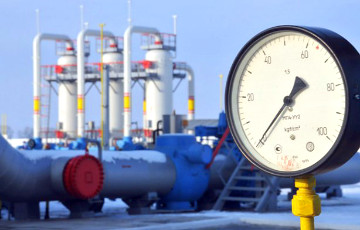Bloomberg: Overabundance Of Natural Gas Worldwide Leading To Price Drop
2- 17.04.2023, 11:06
- 6,134

This trend has not been seen in the past year.
The world is flooded with natural gas, which is driving down prices and creating an oversupply of fuel in both Europe and Asia - at least for the next few weeks, Bloomberg reports.
This trend was not seen last year as Russia's war against Ukraine turned energy markets upside down and Europe decided to secure as many alternative sources of supply as possible.
Supplies are now being replenished from South Korea to Spain mainly as a result of mild winter weather and efforts to reduce consumption. Tankers filled with liquefied natural gas - a temporary solution to replace lost flows from Russian pipelines - are now often struggling to find buyers, spending weeks idling at sea.
Demand for gas usually declines as the heating season ends. The fuel then mostly goes into storage to prepare for the next season, but this year pumping in Europe could be completed as early as the end of August, Morgan Stanley said.
"There appears to be a short-term oversupply of gas, which should keep pressure on LNG prices over the next few weeks, which could lead to a slight decline in benchmarks," said Talon Custer, an energy analyst at Bloomberg Intelligence.
While gas prices in Europe and Asia have fallen sharply from last year's highs, they are still well above the average for the past decade, indicating possible fears that the current oversupply could disappear. Custer says prices "could be close to the floor" as lower gas prices could stimulate additional demand.
All the focus is on summer weather, as any extreme heat and drought could increase consumption. By the start of the third quarter, importers will begin to prepare for winter, intensifying competition for LNG supplies, Custer said. But for now, oversupply is increasing.
According to RBC Capital Markets, in Spain - which has the largest number of LNG terminals in Europe - the storage capacity is already 85% full, which means the national market could quickly become overcrowded and affect spot prices.
In Finland, the number of receiving sites for LNG imports for the summer period has been reduced from 14 to 10, partly because of anticipated lower demand. Europe has been quick to install mobile LNG import terminals as it has reduced dependence on Russian pipeline gas and more will be available this and next year.
Meanwhile, global LNG exports rebounded to a record high in March, thanks in part to recovering production in the US. Additional supply is contributing to lower prices as traders struggle to find buyers for supplies.
UK gas exports to the continent are rising as the country lacks large storage capacity and LNG continues to arrive at a record rate for this time of year. In addition, China has seen record re-exports of LNG amid a slow recovery from the lifting of pandemic restrictions, and some ships are moving away from another major LNG importer, South Korea. Japan, a major buyer, is also proposing to sell batches to prevent an oversupply domestically.
However, the planned annual maintenance of gas facilities from late April through summer could put an end to the oversupply. Other risks remain from further supply cuts from Russia or unexpected shutdowns. Global LNG supplies are expected to remain tight for another two years.
This is reflected in forward prices, which will rise in the coming months, especially in winter, and remain high until early 2025.










